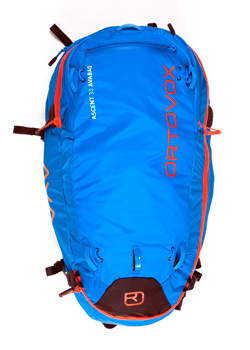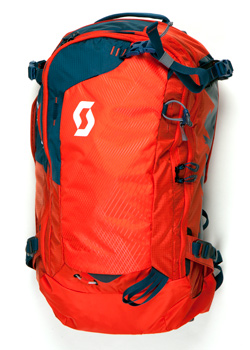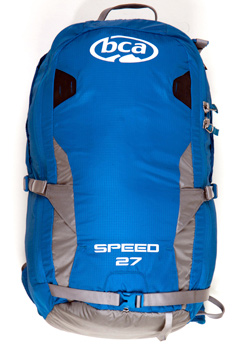Airbag company ABS says the idea for the avalanche airbag came from the story of a German forest ranger who survived an avalanche in the 1970s when the dead animal strapped to his back offered increased flotation. Intrigued by that tale, ABS founder Peter Aschauer created the first balloon pack debuting in 1985. Fast forward three decades, and airbags are nearly ubiquitous in the mountains. But until recently, they’ve been heavy and awkward to pack. Last year, Mammut made major strides in the weight-savings department with their 20-liter Ultralight Removable Airbag 3.0, weighing a comparatively light 4.1 lbs. This year, the race is for space, with new units boasting sleek, compact designs that maximize usable volume for storing more necessities. Here are three standouts. —Louise Lintilhac

Ortovox Ascent
Ortovox debuts their AVABAG system for 2018, a proprietary unit available in five packs that weighs half as much and takes up half the volume of their previous ABS platform. One secret to this savings is the balloon’s seamless and stitchless design—made from durable nylon—that allows the unit to pack down to just two liters. Another innovation lies in the improved efficiency of the venturi air-intake valve, which now encompasses the deployment mechanism. “[This] results in an extremely compact design and also protects the deployment mechanism from impacts, icing and dust,” explains Johannes Kuntze-Fechner, AVABAG engineer and head of development. The pack’s clamshell-like zipper provides access to 30 liters of usable space without interference from the airbag unit. 30L, $720, $190 for cylinder (sold separately), ortovox.com

Scott Backcountry Guide AP 30
Accounting for just 1.7 liters of volume, the Backcountry Guide’s Alpride 2.0 airbag system is one of the most compact on the market. Dual CO2 and argon-gas cartridges keep things sleek—each are just 6.5 inches long and together weigh less than a pound, keeping the airbag unit to a scant 2.5 lbs. total. The CO2 ensures sufficient balloon expansion while argon provides fast inflation at low temperatures. The 2.0 system boasts a new balloon made from easily foldable Nylon 210D Cordura Oxford fabric as well as a redesigned mechanical inflator that’s more compact than the previous iteration, featuring an updated spring to pierce cartridges for inflation and crafted from aluminum (versus previous partial stainless-steel construction) to further save weight. 30L, $850, $50 for replacement cylinders, scott-sports.com

BCA 27 Speed
The new canister for BCA’s Float 2.0 airbag unit is impressively compact, measuring 30 percent smaller than older canisters. How’d they do it? The answer lies in the capability of refill locations. According to BCA, in-house compressors at scuba shops can refill canisters to higher pressures than the portable tanks used in other shops (like retail ski shops). That led BCA to manufacture a smaller canister than can be filled to a higher pressure than the older, larger option while still meeting airbag inflation needs. And because of its slight build, the canister fits within the airbag balloon partition, keeping the main compartment clutter free and true to its advertised volume. 27L, $630, $200 for cylinder (sold separately), backcountryaccess.com











Related posts:
Gearbox: The Finer Points of La Sportiva's Skorpius CR
Going the Distance: Six travel and camping essentials
Gearbox: Packing for Anything
Gearbox: Helmets